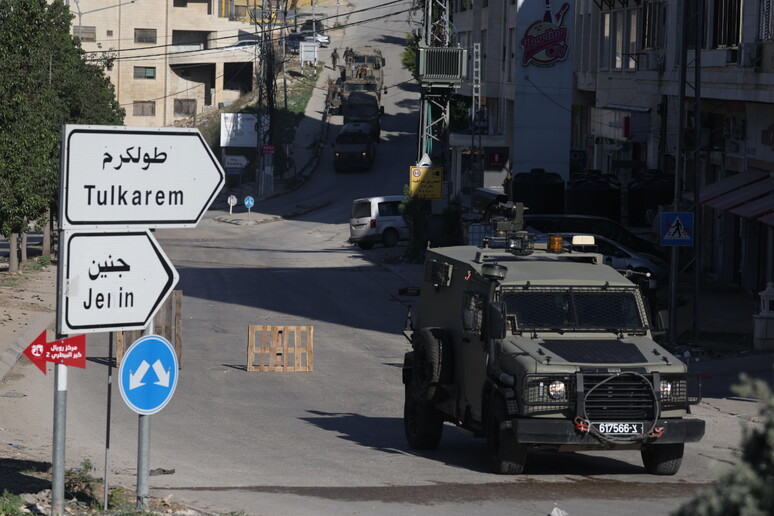InfiRay Releases World's 1st 8 Micron Thermal Camera Detector
 2021-06-11
2021-06-11
Yantai, China, June 9, 2021 - (ACN Newswire) - InfiRay has developed the world's 1st 8 micron uncooled thermal camera detector, with a large array (1920 x 1080) and core technologies including a low noise readout circuit, high uniformity VOx film, sub-wavelength optical absorption structure, and small pixel self-heating effect compensation. A higher spatial resolution has been achieved and moving target capture capability improved, all marking important milestones in the technology and development of uncooled thermal camera detectors.

InfiRay 8 Micron Wafer over A Real-shot from InfiRay's 8 Micro 1920 x 1080 Thermal Camera Module.
Development History of InfiRay's Infrared Technology
InfiRay specializes in the research and development of thermal imager technology. Main products include IRFPA thermal camera detectors, thermal camera modules and thermal imagers, well known for their high sensitivity. The products are applied in a wide variety of settings, such as epidemic prevention and control, industrial temperature measurement, security, outdoor night vision, and automotive night vision.
As a company focused on technological innovation, InfiRay has maintained half of its staff in R&D and has been awarded with 714 patents over the past 8 years, as well as achieving 8 important iterative thermal upgrades in pixel size, from 35 micron, 25 micron, 20 micron, 17 micron, 14 micron, 12 micron, 10 micron, to 8 micron today.
In early 2019, InfiRay released a 10 micron HD thermal camera detector with the world's smallest pixel size, becoming the 2nd company in the world to possess an advanced 10 micron uncooled thermal imager technology. Today, InfiRay refreshes the record again by releasing an 8 micron thermal camera detector, filling the global development gap.
In 2020, InfiRay developed the ASIC image processing chip, replacing traditional FPGA thermal imagers with a setup characterized by less volume, lower power consumption and higher performance, able to meet the SWaP3 (Size, Weight, Power Consumption, Performance, and Price) application requirements of a new generation of thermal camera detector.
InfiRay Masters Leading 'Ultra Clear' Thermal Imager Technology
At the heart of each InfiRay thermal imager is a thermal camera detector which is engraved 'InfiRay(R)', meaning the world's most advanced thermal imager, independently developed by InfiRay. Thus the thermal imager is at work not only providing 'Ultra Clear' thermal images, but detecting farther hot targets.
InfiRay's R&D comprises senior engineers experienced in various technological fields including integrated circuits, electronic materials, MEMS sensors, packaging & testing, and thermal imager algorithms. With ongoing research into the VOx materials used in MEMS sensors and thermal camera detectors, InfiRay masters the 'Ultra-Clear' technologies of high-performance thin films and the integrated processes of today's thermal imager industry.
InfiRay's 'Matrix III' Patented Image Processing Algorithm
Thermal camera detectors capture heat to convert into thermal images, but the absence of an imager lens may result in image unevenness. InfiRay developed Matrix III, an integrated algorithm to enhance original thermal images and improve the visibility and feasibility of object recognition. Matrix III compensates for blind pixels that appear in the imaging process, so final thermal imager can generate superior contrast and completeness, and realize detail and definition processing based on thermal imaging.
New Applications with the 8 Micron Thermal Camera Detector?
Thermal imagers are tending toward smaller, smarter, and easier to integrate. InfiRay's 8 micron thermal camera detector will drive new demand for thermal imaging applications on mobile phone, AI, IoT (Internet of Things), autonomous driving, consumer electronics, outdoor night vision, smart home, and smart security.
InfiRay's P2 Thermal Camera for Smartphone (2021), which can be directly connected to the mobile phone, is ultra-thin (only 9mm) and ultra-light (only 9g). With the new 8 micron era, the sizes of thermal camera detectors have been increasingly reduced. Thus high-definition thermal imagers can be perfectly integrated with mobile phones. Let's look forward to the breakout applications that will follow in our lives.
Media Contact
Echo Sun, orders@infiray.com
W: www.infiray.com
T: +86 535 3410616
SOURCE: InfiRay Technologies Co., Ltd.




